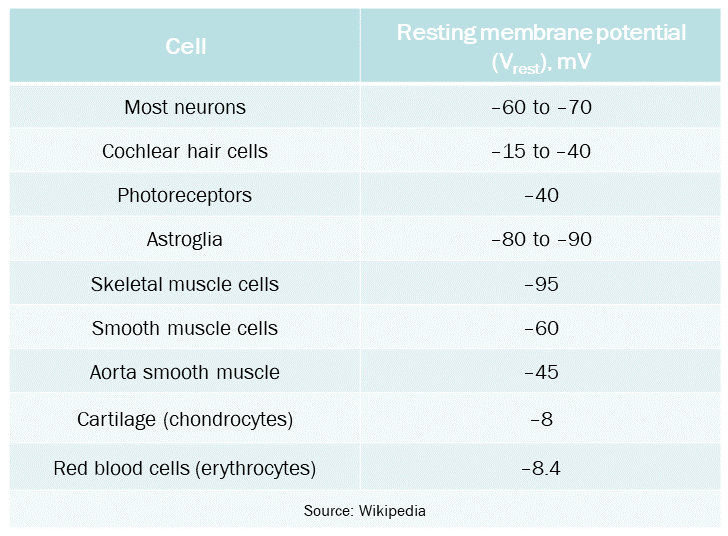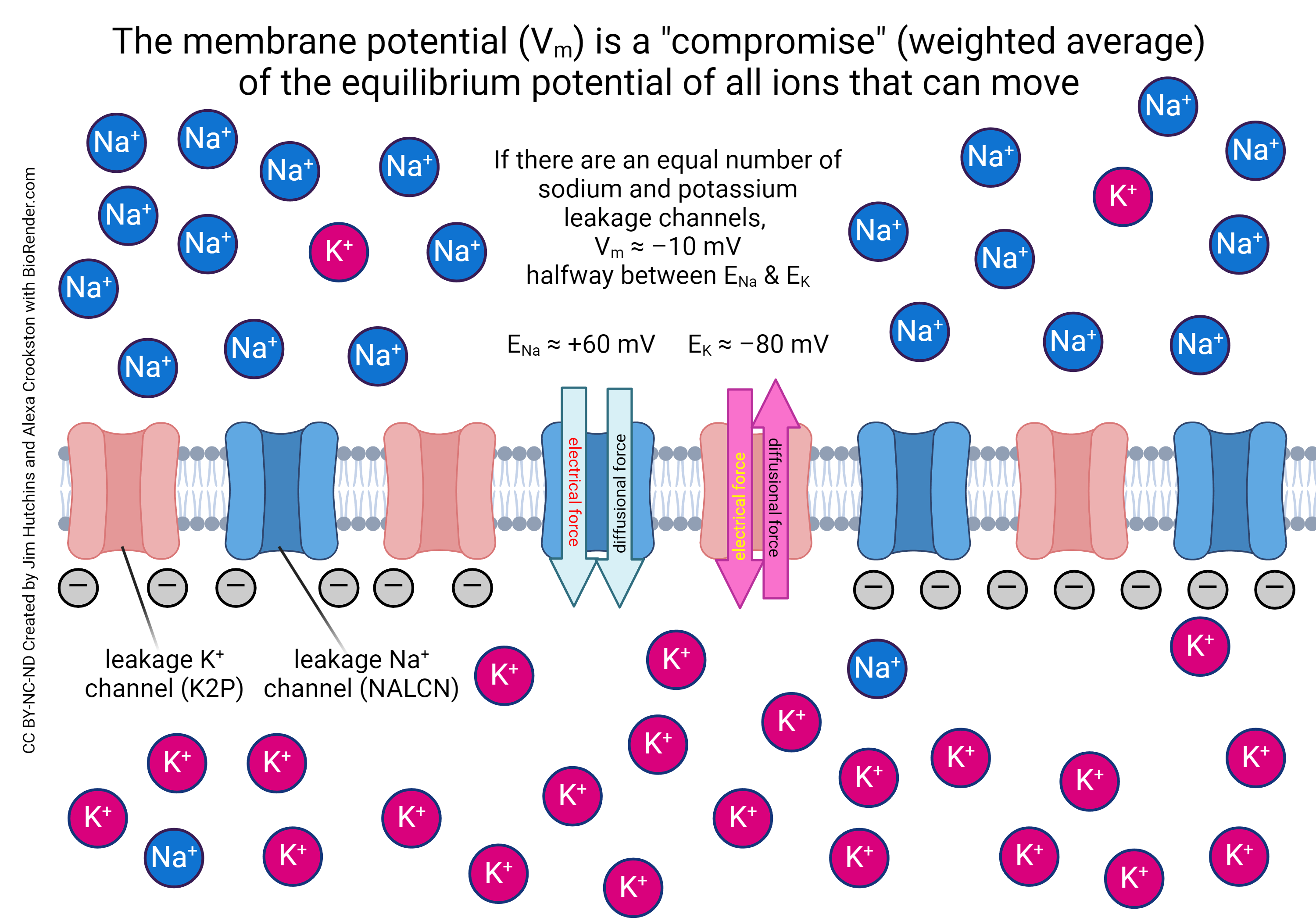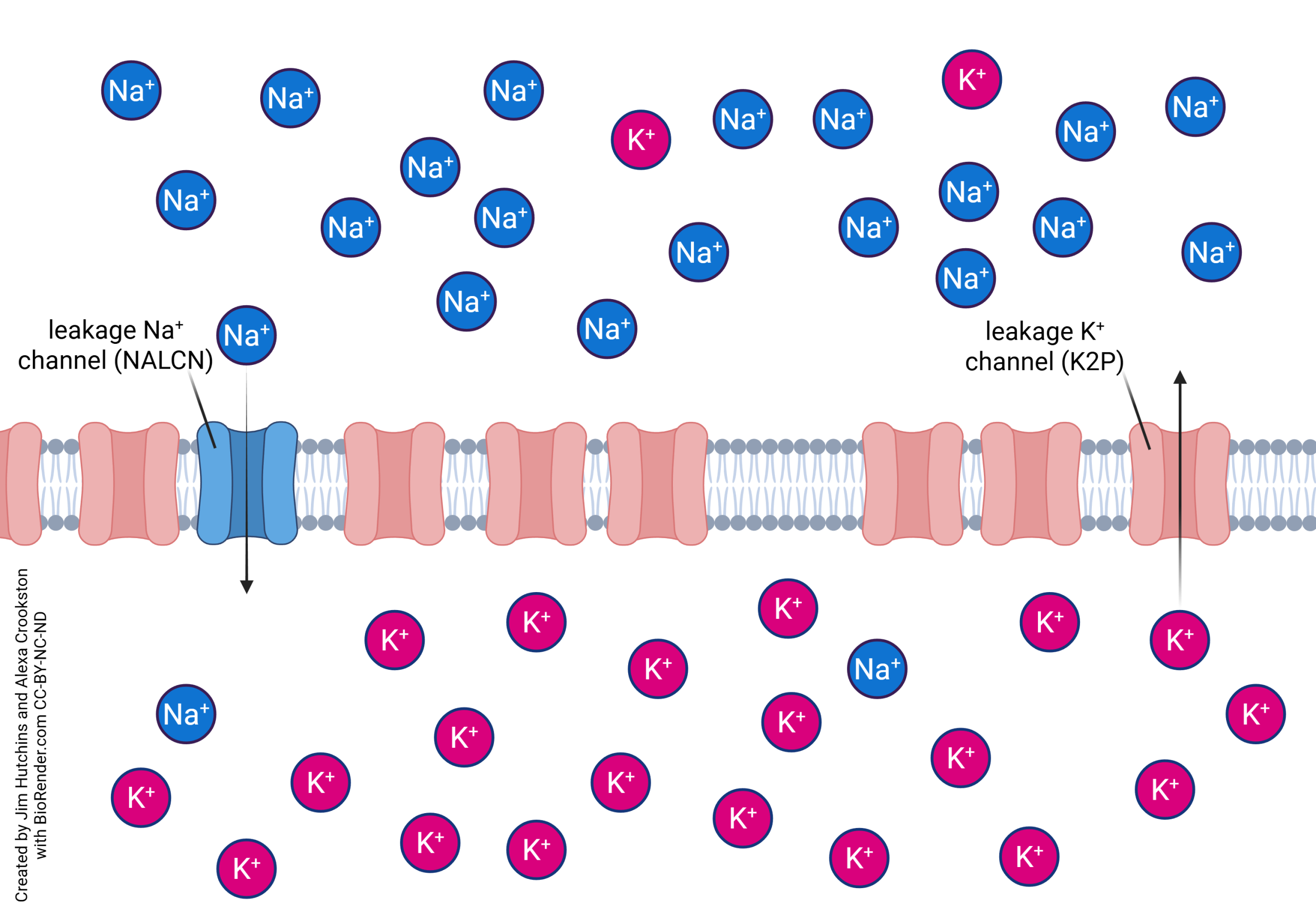The Resting Membrane Potential
Caleb Bevan
Objective 5: Explain how the channels carried by a cell lead to a resting membrane potential.
The Resting Potential
Because (almost) all cells have the same distribution of sodium and potassium ions, and (almost) all cells have leakage channels for sodium and potassium, all cells have a resting potential that is negative inside.

This table shows values for the resting potential for a variety of different cells. Almost all cells are slightly more negative inside than outside.
For a neuron, the resting potential (i.e. resting voltage) is the voltage that a neuron holds when it’s not doing anything especially neuron-ish. As you can see, the numbers vary for different kinds of neurons. Other excitable cells (e.g. muscle cells) also have large negative resting potentials. Non-excitable cells (cartilage, red blood cells) have a small but significant negative voltage inside.
Where does the resting potential come from? It’s a balance of the equilibrium potentials for potassium and sodium. You can think of it as a kind of “average” of the action of all the leakage channels for potassium and leakage channels for sodium.
If we only had leakage channels for potassium in the neuronal membrane, we’d rapidly reach equilibrium for potassium (say, –80 mV). If we only had leakage channels for sodium in the neuronal membrane, we’d rapidly reach equilibrium for sodium (say, +60 mV).
If we had both kinds of leakage channels in equal numbers, the resting potential would be close to the average of –80 mV and +60 mV or about –10 mV. That’s the case in non-excitable cells.

If, on the other hand, we had a lot more potassium leakage channels than sodium leakage channels in the neuronal membrane (NARRATOR: we do) then the resting membrane potential would be a lot closer to the potassium equilibrium potential.

For a typical neuron, there are about 14 leakage potassium channels in the neuronal membrane for every 1 leakage sodium channel. As we would expect, then, the resting potential is much much more greatly influenced by the potassium equilibrium potential than the sodium equilibrium potential because the potassium “team” is 14 times stronger than the sodium “team”. Put another way, the equilibrium potential must lie between the sodium equilibrium potential (+60 mV) and the potassium equilibrium potential (–80 mV) but it’s very close to EK because of the preponderance of leakage potassium channels.
These potassium channels are referred to by the slightly confusing name of two-pore domain potassium channels (abbreviation K2P) even though they have only one pore. These channels do, however, have two domains which code for a pore, hence the name. Remember that K is the chemical symbol for potassium.
Sodium leakage channels go by the gene name of NALCN (shorthand for sodium leak channels non-selective; remember that Na is the chemical symbol for sodium).
In formal terms, we say the permeability (ability to move) of the membrane to potassium ions is about 14 times the permeability of the membrane to sodium ions.
Media Attributions
- Resting Neuronal Membrane Ion Distribution and Leakage Channels © Jim Hutchins and Alexa Crookston is licensed under a CC BY-NC-ND (Attribution NonCommercial NoDerivatives) license

